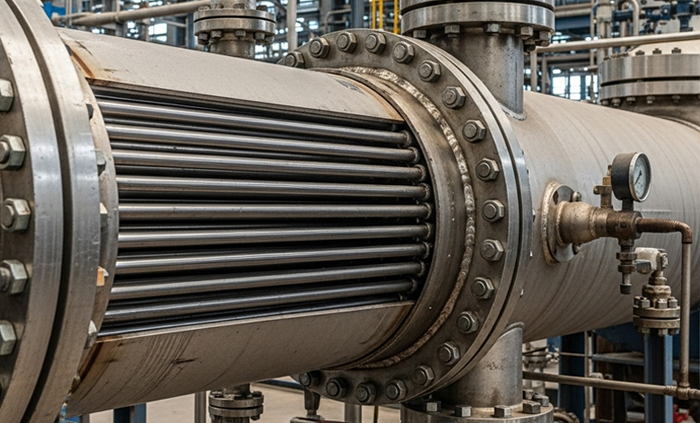
We are Manufacturer, Supplier, Exporter of Shell Tube Heat Exchangers from Pune, Maharashtra, India.
Shell Tube Heat Exchangers are a class of industrial thermal management devices widely used to transfer heat between two fluids. They are one of the most common and robust types of heat exchangers due to their simple design, high heat transfer efficiency, and ability to handle a wide range of operating pressures and temperatures. The fundamental design consists of a large cylindrical Shell with a Bundle of Tubes inside. One fluid flows through the tubes, while the other fluid flows outside the tubes, within the shell. The two fluids are separated by the tube walls, allowing heat to be transferred from the hotter fluid to the colder fluid without mixing.
The design of the Shell Tube Heat Exchanger is highly customizable to optimize performance for specific applications. The Tube Bundle can be a fixed tubesheet design, U-tube design, or a floating head design, each offering distinct advantages. The fixed tubesheet design is cost-effective but is susceptible to thermal stress, while the U-tube and floating head designs accommodate thermal expansion, making them suitable for high-temperature differentials. Baffles are strategically placed within the shell to direct the fluid flow across the tube bundle, increasing the fluid velocity and turbulence, which in turn enhances the heat transfer rate. The materials of construction are a critical consideration and are chosen based on the fluids being handled, operating temperatures, and pressures to ensure long-term durability and corrosion resistance. Common materials include MS (Mild Steel), SS (Stainless Steel) 304, SS (Stainless Steel) 316, Carbon Steel, and various alloys like Brass, Copper, and Titanium. The tubes are typically made from materials with high thermal conductivity. The Shell Tube Heat Exchanger's robust construction makes it suitable for demanding industrial environments, including those involving high pressures and corrosive media. They are highly efficient in a variety of roles, from heating and cooling fluids to condensing vapors, making them indispensable across many sectors. The predictable performance and ease of maintenance, along with the ability to be designed and manufactured to international standards like ASME (American Society of Mechanical Engineers) and TEMA (Tubular Exchanger Manufacturers Association), further cement their position as a cornerstone of thermal process engineering.